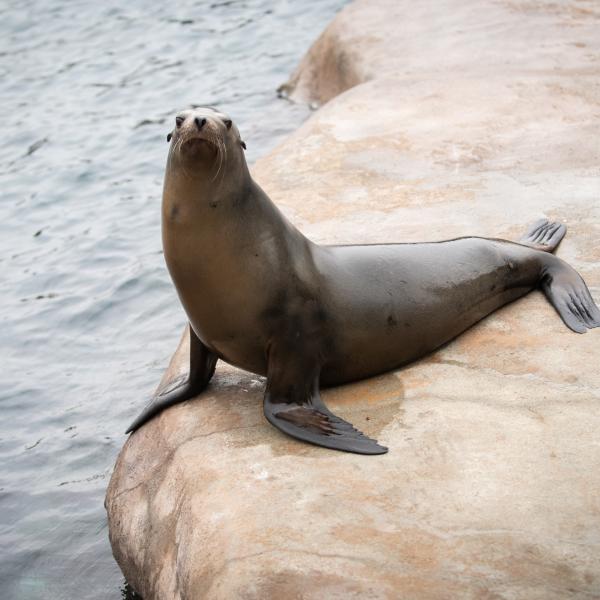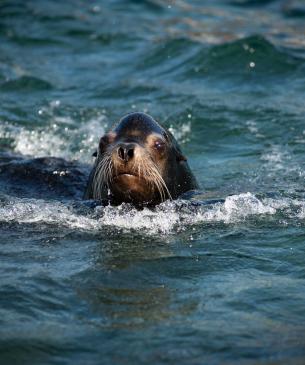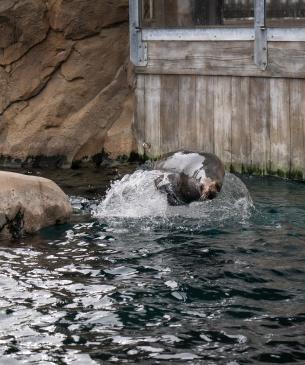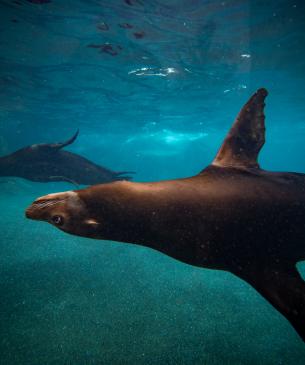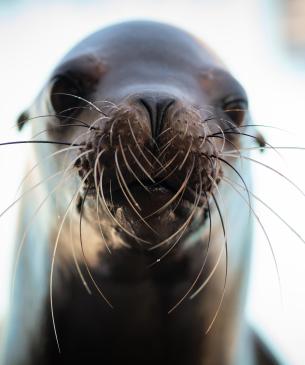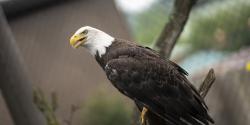California sea lions are intelligent, playful, and known for their noisy barks.
They belong to the order Pinnipedia, which includes seals, sea lions, and walruses.
Scientific Name: Zalophus californianus
Conservation Status: Least Concern
Size: 6 to 7 ft. in length
Weight: Males weigh 600 to 850 lbs. and females 200 to 220 lbs.
Median Life Expectancy: 23.3 years

